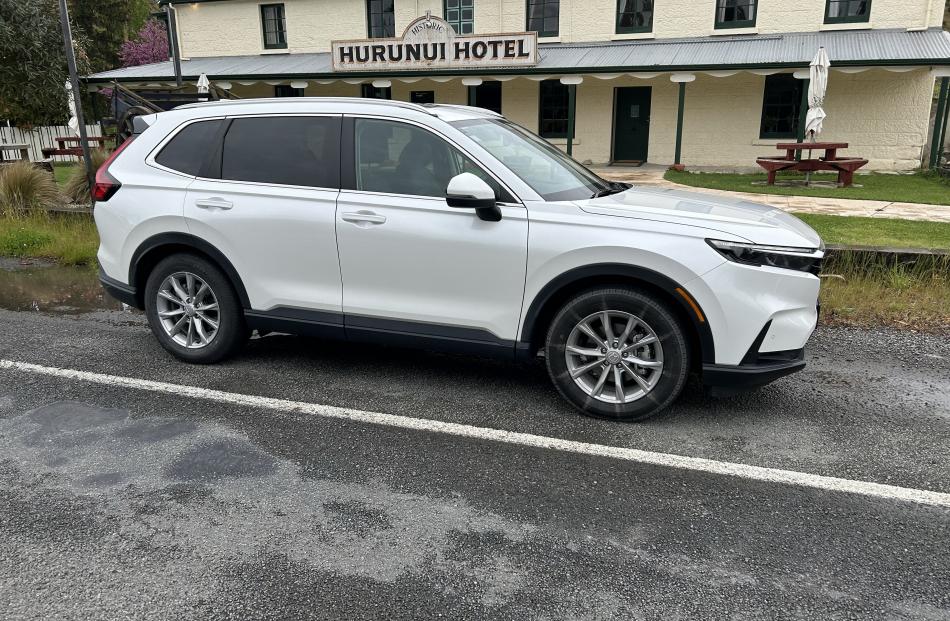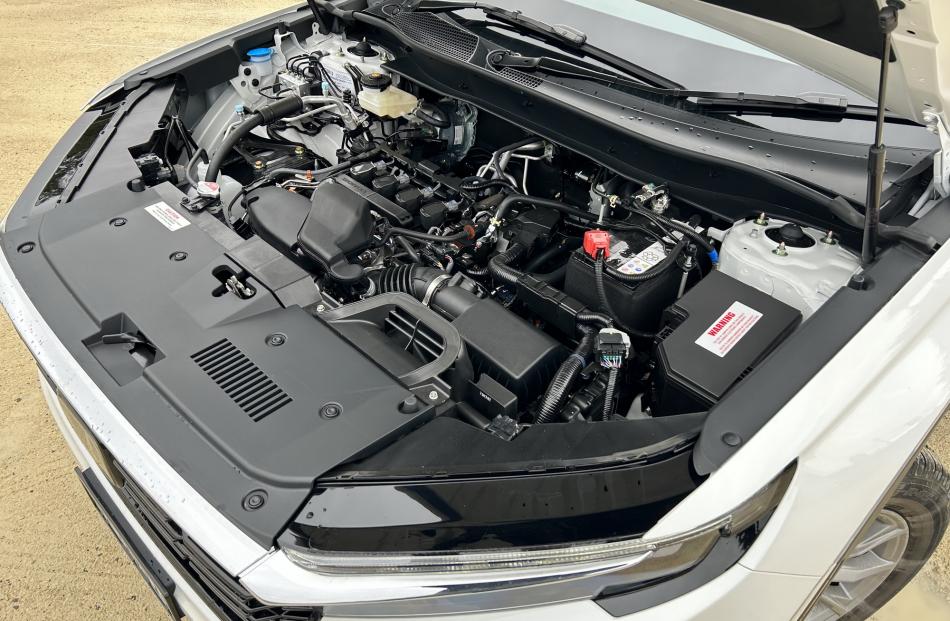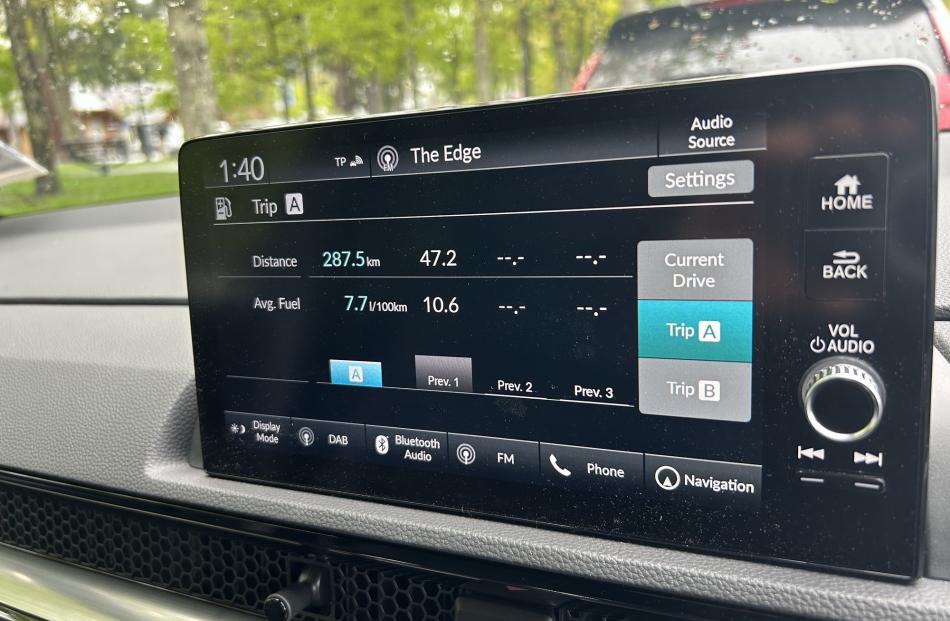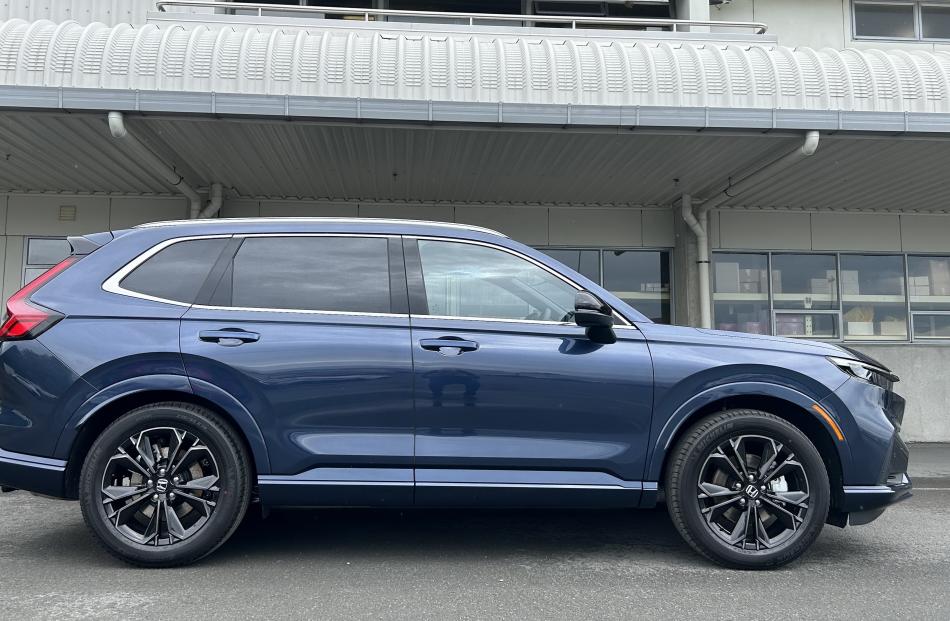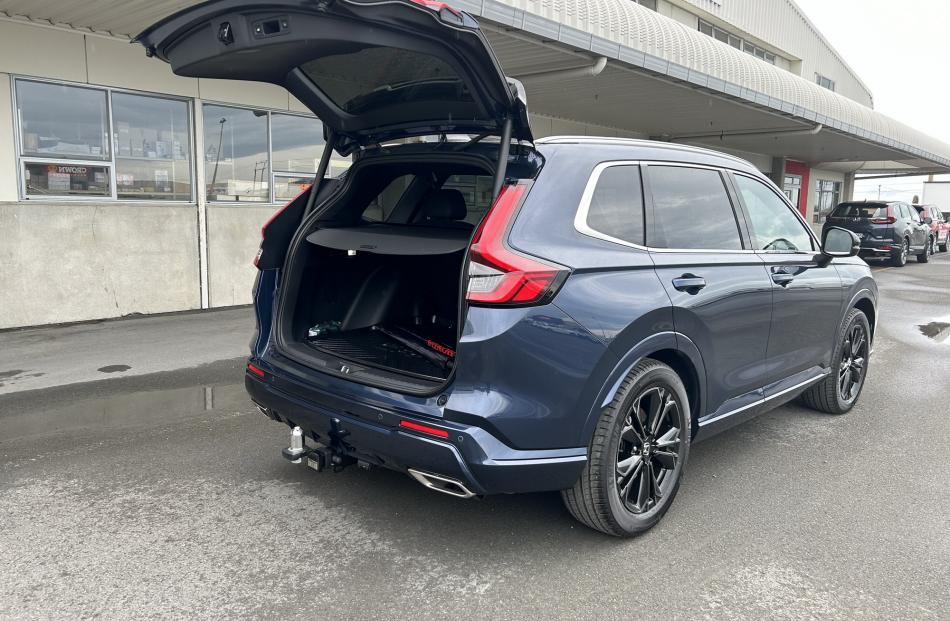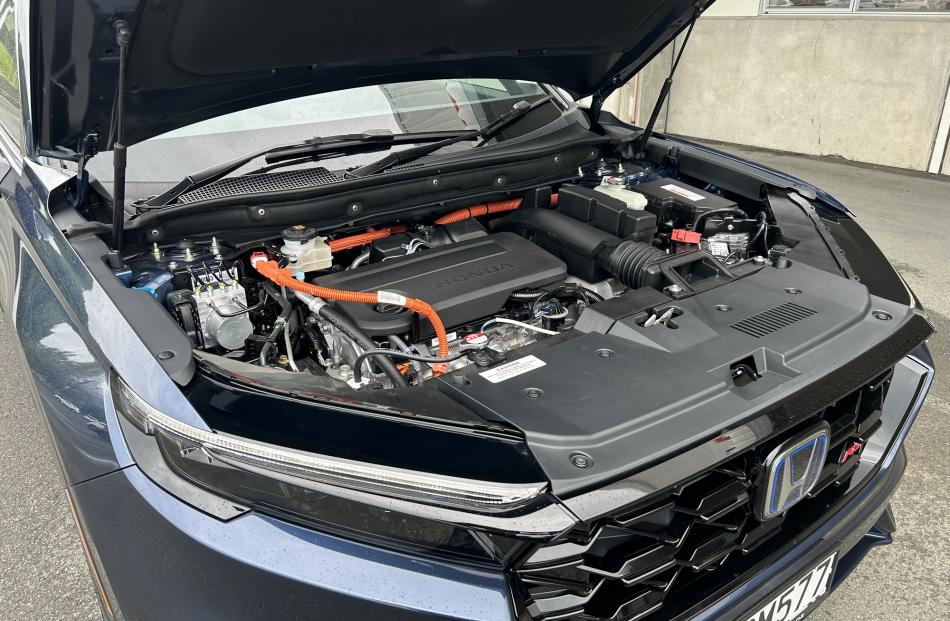By RICHARD BOSSELMAN
Stinky, sticky black sludge.
That was the constituent element of the off-road course Honda NZ had cut out through industrial wasteland next to their then national headquarters near Auckland airport. ‘Head down the back, around those oil drums, then return.’’ In that inadequate-looking toy? We were highly dubious. No-one expected success. Yet it got through. Again. And again. And again. We were gob-smacked. That exhibition of unanticipated competence back in 1996 was a heck of an introduction to the CR-V in its very first iteration.
Today crossovers and passenger car-vibe sports utilities rule. Back then, the ‘‘compact recreational vehicle’’ was a novelty. Honda was breaking new ground here, the first export market, with really only one other new kid — Toyota’s equally Tonka-like ‘‘recreational activity vehicle 4’’ — as competition.
In those days, remember, everything to do with off-roading was military grade. Ladder frame chassis, low-range and diff locks were the way. The new-wave Japanese stuff lacked all that. The CR-V wouldn’t last five minutes, some scoffed. Thirty years on ... CR-V has become a global and national success story. There’s been a lot of change over successive generations; even the badge design has altered.
Having all five preceding generations on the latest range’s launch event revealed how progressively the machine has grown, then grown some more.
CR-V also gained then lost a manual transmission, dallied with diesel, and (sadly, in my view) divested a clever design element; a luggage compartment floor that doubled as a picnic table.
All-wheel-drive continues, but front-drive is to the fore now. Tech enhancement is astounding; the latest big change is introduction of electric assist. Prices have risen, too; this latest line, compared to the outgoing type, is noticeably more expensive.
Top choice now is a front-drive CR-V e:HEV RS that houses a new 2.0-litre Atkinson-cycle four-cylinder petrol engine with two electric motors.
Alternate choices are Sport editions; an entry all-wheel-drive five-seater — not present on the launch drive — and a $4,000-dearer front-drive seven seater. These continue with the familiar 1.5-litre turbo petrol, making 5kW more power than the RS unit but 95Nm less torque.
Persistent heavy rain turning to a touch of sleet in the Lewis Pass, and stirring into slurry big sections of road works within an hour of departure, enhanced the launch drive through epic landscape from Honda NZ’s old assembly factory in Nelson to Christchurch. It didn’t take long to find adventuresome spirit still exists behind this badge.
With the e:HEV, Honda recognises it’s playing a different game to key rivals, whose electrification plans span from mild self-contained hybrid in the Toyota RAV4 and Haval H6, a similar approach to Honda’s in the Nissan X-Trail, to plug-in replenishment for the Mitsubishi Outlander, Kia Sorento and Hyundai Santa Fe.
Could Honda have countered more directly? The CR-V is provisioned elsewhere in PHEV, again front-drive (as with e:HEV, hybrid elements take up the space where a third seat row would go). But that version isn’t signed off for our region. The PHEV has the same powertrain as the e:HEV but, with a larger battery, has up to 82km electric-pure operability. The CR-V e:HEV also comes in AWD overseas, but won’t do so here. Whether that is by choice or is due to market consideration isn’t clear.
As the e:HEV acts mostly as a generator and is only occasionally in a direct drive mode, this is at heart petrol-reliant transport, but not massively. Delivery of 7.7-litres per 100km average to Hamner Springs, if 1.3L/100km shy of its factory-certified best, seemed a very decent result given the conditions and my driving.
Honda NZ staffers driving a third-generation all-paw example plucked from the company’s heritage fleet in Nelson tailed me through the Lewis and were working to hang on in the windier and wetter sections.
That was an interesting workout for the RS’s technically intriguing drivetrain. In simplest explanation, with e:HEV the electric motors drive the wheels most of the time, with the petrol engine acting as a power station to keep the relatively small battery topped up and only rarely involved more directly. To this Honda mates a new, more complex kind of constantly variable transmission than goes into the Sport.
Honda programming allows some theatre. With hard acceleration, the powertrain will deliver convincing engine rpm sweeps that sound just like well-executed race shifts, but without shift shock.
Even at times when you feel it would be logical for the engine to be directly involved, it’s still not easy to pick. It takes a bit of getting used to, but the manner in which it can build pace is quite something.
The engine, electric motor, and generator being engineered so they are off-axis from one another, allows the engine to be clutched into the mix to directly drive the wheels in two ratios, not just one, and is also a reason this model has a reasonable towing rating.
As much as the CR-V is now bigger — and heavier — it still feels deft and friendly. The RS has firmer suspension tune and thicker stabiliser bars than the Sport, but not to point where it becomes ruinously rigid. Indeed, it’s the quality of the ride that really stands out. The suspension seems to find a great balance between firm and soft, taking bumps and ruts in its stride.
It’s all about smoothness and fluidity.
The roads on which the Sport 7 was experienced were less of a challenge. Gut feeling is that this one has lighter steering feel and might express more body roll.
Again, though, it gives off a sense of structural rigidity and outright calm you don’t always expect to get in this category. It benefits from a stiffer body shell; the addition of structural adhesive alongside the usual spot welds and the use of beefier front and rear subframes has paid off.
Operability wise, this car’s orthodox CVT is prone to some drone but calibrated to provide comfortable open road cruising. With this one, paddles select the CVT steps — in the RS they alter regen settings — and there’s just a single drive mode, whereas the RS has three.
Again, you get the sense a lot of effort has gone into sound suppression. The RS achieves the fanciest treatments in a range-wide targeted use of sound insulating materials and glass that is a little thicker than previously, but in the Sport as well, road and wind noise are well-suppressed.
With the Odyssey people mover now retired, the CR-V Sport 7 is the sole Honda able to carry more than four passengers. Trying it in fully-occupied configuration will be a priority for test; you’ll want to know how the engine copes and, though this CR-V is more spacious than those previous, it’s a smaller overall capsule than Odyssey’s, so leg and head room in the rear-most section seem best-suited to children.
Luggage room when all chairs are up is a modest 150-litres; just enough for a couple of soft bags. Put it into five-chair mode and it can be slightly better than the regular type, which claims 581-litres, as there’s facility to slide the middle row further forward, yet leave it still usable for occupancy.
With all seats behind the front chairs down the Seven has 1064L, the RS 840L. Both legroom and headroom immediately behind the front chairs seems ample even for taller passengers.
The styling play probably won’t command a huge amount of lingering attention; it is clearly larger — the seven chair format fits within the same body as the five-seat arrangement — and is perhaps a touch conservative, but is neatly dimensioned and obviously more modern than its predecessor.
Owners of the old car will see more advancement in the new; most of the dashboard design is now in line with features from the Jazz, Civic and ZR-V.
It’s less cluttered and incorporates more modern technology, as well as a smart grille that hides the air vents.
What could be done better? Some of the graphics on the central touchscreen and digital instrument cluster are curiously old-school and quirkily delivered; the menu system on the central touch screen is not class-leading, though neither is it hard to fathom.
Being a Honda, it is of course well built, with enough premium ambience mixing with practical plastics, plus a metal-effect dashboard trim to jazz it up a touch.
Honda’s suite of safety systems, called Honda Sensing, uses sensors around the entire car to create a wall of defence, most well understood these days, such as the autonomous emergency braking and the lane departure warning. The AEB can now detect pedestrians and cyclists. The lack of a head-up display and traditional blind spot monitoring is a pity.
Honda Connect is a smartphone app with which a user can employ their smartphone as a remote to lock and unlock the vehicle, start the engine, set the air con and check the car’s status in real time.
You can see why Honda is so confident about this car. CR-V has always had talent and style. That 2.0-litre e:HEV seems good for efficient driving, whether that’s urban or long haul and will be a good stop-gap until Honda here can advance to full electric; local high-ups say that aspiration won’t be realised until 2026 as ostensibly good current candidates in circulation elsewhere — the Prologue, Honda e and e:NY1 — aren’t eligible for NZ residency.
At A Glance
HONDA CR-V SPORT 7 and RS e:HEV
Prices: $53,000 Sport AWD five-door; $57,000 Sport 7 front-wheel-drive; $67,000 RS e:HEV FWD.
Clean Car rebates and charges (additional to price): Sport AWD (tbc); Sport 7 $2702; RS neutral.
Engines: 1.5-litre four-cylinder turbo petrol, 140kW/240Nm; 2.0-litre four-cylinder turbo with dual electric motor integration, 135kW/335Nm.
Transmissions: CVT; seven-speed Sport, simulated RS.
Safety rating: Five-star
Wheels and tyres: alloy wheels, 235/60 R18 Sport; 235/55 R19 RS.
Fuel and economy: petrol, 8.1l/100km, Sport; 6.4L/100km RS.
Emissions: 187g CO2 per kilometre, Sport; 146g CO2/km RS.
Dimensions: Length, 2701mm; width, 1866mm; height, 1681mm.

